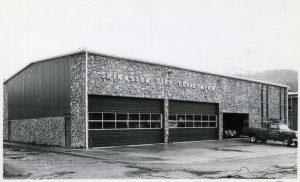Few everyday citizens think much of area volunteer emergency services, outside of driving by a station, seeing their vehicles proudly roll past in a parade, or attending a fundraising event.
But then may come one of the many potential personal tragedies that most hope never happens to them. Wiring issues spark a fire inside a home. A bunch of kids try floating in a creek or a river after a major storm and get stuck and injured in a dangerous spot. A loved one feels the terrifying squeeze of pain in the chest that means “heart attack.”
Or a massive wildfire breaks out requiring volunteer service assistance from other cities, counties, or even states, bringing hundreds in for days at a time to help.
Even then, when a trained professional volunteer shows up to rescue the kids, put out the fire, or treat and transport a medical victim, the feelings are those of relief because a committed team has come to do their best to make things right.
According to Donnie Lindsey, chief of the Shinnston Volunteer Fire Department, approximately 1,100 times last year, their house answered the call. It upholds in every instance what he calls “a deep and rich tradition” dating back many years “to our founding fathers.” Harrison County as a whole can thank the Shinnston department’s “forefathers” who played key roles in establishing modern emergency services and communications as part of its “deep, long history.”
Shinnston, like other departments across the nation, has seen significant struggles. According to a Feb 2022 National Public Radio interview, “the National Volunteer Fire Council’s most recent count shows a 17 percent drop in the number of volunteer firefighters since 1984, but calls for service have tripled in that time.”
Lindsey agrees that the primary challenge lies in “a shortage of volunteers,” adding that “that’s always been prevalent. Volunteerism has fallen off significantly in the past several years.”
In 2000 Harry R. Carter, a contributing editor to the Firehouse trade journal, noted that his dissertation research revealed five reasons for the drop in participation These included issues in leadership, organization, the personal lives of volunteer responders, and also economic and interpersonal issues.
Lindsey echoes other fire chiefs in citing the impact of increasing training demands in West Virginia. “It takes 180 hours just to ride the truck,” he said. Lindsey also described the impact of lengthy trainings held in areas of the state convenient for some, but not for most, regardless of where held. It “takes a lot of time for someone with a full time job and a family,” Lindsey noted. He added that “career side” fire services also have struggled with recruiting and retention in recent years.
The very challenges that keep many from joining also make those who can and do answer the call that much more special to the service and valuable to the community. “You have to get up in the middle of the night to fight a fire, then go to work the next day,” Lindsey described, then added “you have to be truly passionate about making a difference in the community.”
In rural areas, even ambulance calls can keep paramedics on a call for six to eight hours, with hour or longer one way trips between patient pickup and the hospital.
He also described how firehouses also rely heavily on family legacies and traditions. “It’s so near and dear to people’s hearts,” Lindsey shared, adding that “a lot of the newer people have dads and grandfathers who have been in it.” Also he stated that “ a lot of it is people who simply care. They care about the community. They’re a team player, committed to themselves and others. They want to simply make a difference.”
Burdens and challenges will only increase on volunteer fire and emergency response services. The future “has become very sketchy,” Lindsey admits, saying “a lot of small EMS agencies have shut down due to lack of staffing.” They are facing a critical shortage of paramedics, which is a “big deal. They need to have a good amount.”
Another issue lies in the ballooning cost of basic equipment, such as beds, heart monitors, and other devices. A single cardiac monitor now costs about $40,000. Ambulances and fire trucks have also shot up in price. Biden Administration mandates forcing future limits on heavy gasoline powered vehicle use have made all emergency response vehicles, and even school buses, incredibly difficult and expensive to procure.
Fundraising has always been vital to sustaining operations, especially as state and local funding remains stagnant.
All that said, the volunteer fire, EMS, and rescue services do not only need men and women who will race into a burning building or drive to a remote area to save the life of a patient. “You are always looking for help. Just come and be a part,” Lindsey asked. He added that volunteers can help to keep the house clean, to assist with paperwork, or other needs normal to almost any organization. “If you know someone interested, let us know. Send them our direction.”
Lindsey closed with, “It’s a team effort to find people. If you want to give back, be a part, talk to us. There’s a lot of ways to help.”



